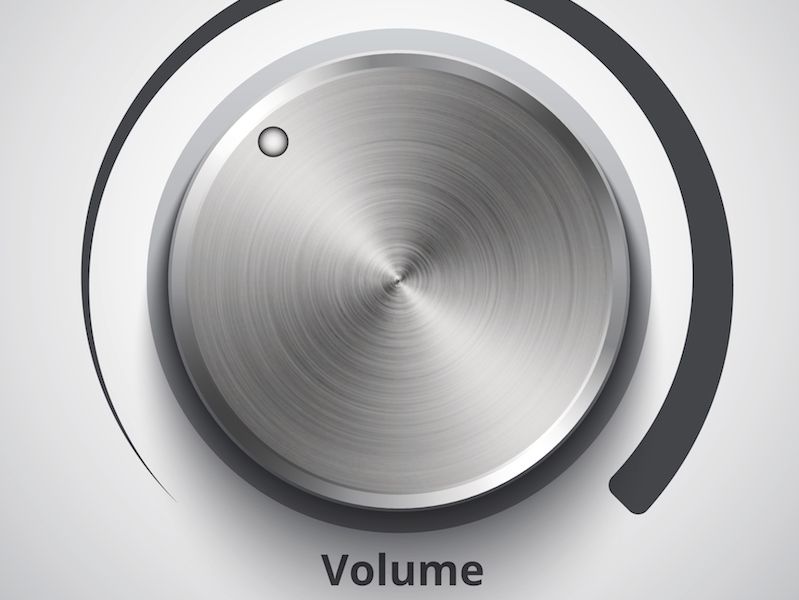
Have you ever noticed the “Beware of Sharks” sign when you go to the ocean? It’s not really a warning you dismiss. You might even think twice about swimming at all with a sign like that (if the warning is written in big red letters that’s particularly true). Inexplicably, though, it’s difficult for people to listen to warnings concerning their hearing in the same way.
Recent research has found that millions of people neglect warning signs when it comes to their hearing (there’s little doubt that this is a global challenge, though these studies were specifically done in the United Kingdom). Part of the issue is knowledge. It’s fairly instinctive to be scared of sharks. But the majority of people don’t have an overt fear of loud sounds. And the real question is, what’s too loud?
Loud And Hazardous Sound is Everywhere Around us
Your ears are not just in peril at a live concert or construction site (not to minimize the hearing risks of these situations). Many common sounds are potentially hazardous. That’s because it isn’t only the volume of a sound that presents a danger; it’s also the duration. Your hearing can be damaged with even low level noises like dense city traffic if you experience it for more than a couple of hours at a time.
Read on to find out when sound becomes too loud:
- 30 dB: This is the sound level you would expect of normal conversation. You should be perfectly fine at this level for an indefinite time period.
- 80 – 85 dB: This is the volume of heavy traffic, a lawnmower, or an air conditioner. After about two hours this level of sound becomes damaging.
- 90 – 95 dB: A motorcycle is a practical example of this sound level. This amount of exposure becomes harmful in as little as 50 minutes of exposure.
- 100 dB: This is the level of noise you might experience from a mid-size sports event or an oncoming subway train (depending on the city, of course). This level of sound can become hazardous after 15 minutes of exposure.
- 110 dB: Have you ever turned your Spotify music up to ten? On most smartphones, that’s right around this volume. This amount of exposure is dangerous after only 5 minutes of exposure.
- 120 dB and over: Immediate pain and damage can happen at or above this volume (consider an arena sized sporting event or rock show).
What Does 85 Decibels Sound Like?
Generally speaking, you should consider anything 85 dB or above as putting your ears in the danger zone. But it can be difficult to know how loud 85 dB is and that’s the difficulty. A shark is a tangible thing but sound isn’t so tangible.
And hearing warnings frequently go ignored for this reason especially when the sound environment isn’t loud enough to cause pain. Here are a couple of potential solutions:
- Adequate signage and training: This especially relates to workspaces. The significant risks of hearing loss can be reinforced by training and sufficient signage (and the advantages of hearing protection). Signage could also inform you just how noisy your workspace is. Helping employees recognize when hearing protection is suggested or necessary with appropriate training can be really helpful.
- Get an app: There isn’t an app that will directly safeguard your ears. But there are a few sound level metering apps. Injury to your hearing can occur without you realizing it because it’s tough to know just how loud 85 dB feels. Making use of this app to monitor sound levels, then, is the solution. Utilizing this approach will make it more instinctive to distinguish when you are moving into the “danger zone”. (and you will also discern right away when things are getting too loud).
If You’re in Doubt, Protect Yourself
Signage and apps aren’t a foolproof answer. So when in doubt, take the time to safeguard your ears. Noise damage, over a long enough time period, can lead to hearing loss. And it’s easier than ever to damage your ears (it’s a straight forward matter of listening to your tunes too loudly).
If you’re listening to headphones all day, you should not increase the volume past the half way. If you keep cranking it up to hear your music over background noise you should find different headphones that can block out noise.
So when volume becomes too loud, it’s essential to recognize it. And in order to do this, you need to raise your own recognition and knowledge level. It isn’t hard to limit your exposure or at least wear hearing protection. That starts with a little recognition of when you should do it.
That should be easier nowadays, too. That’s even more true now that you have some insight.
Think you could have hearing loss? Make an appointment.